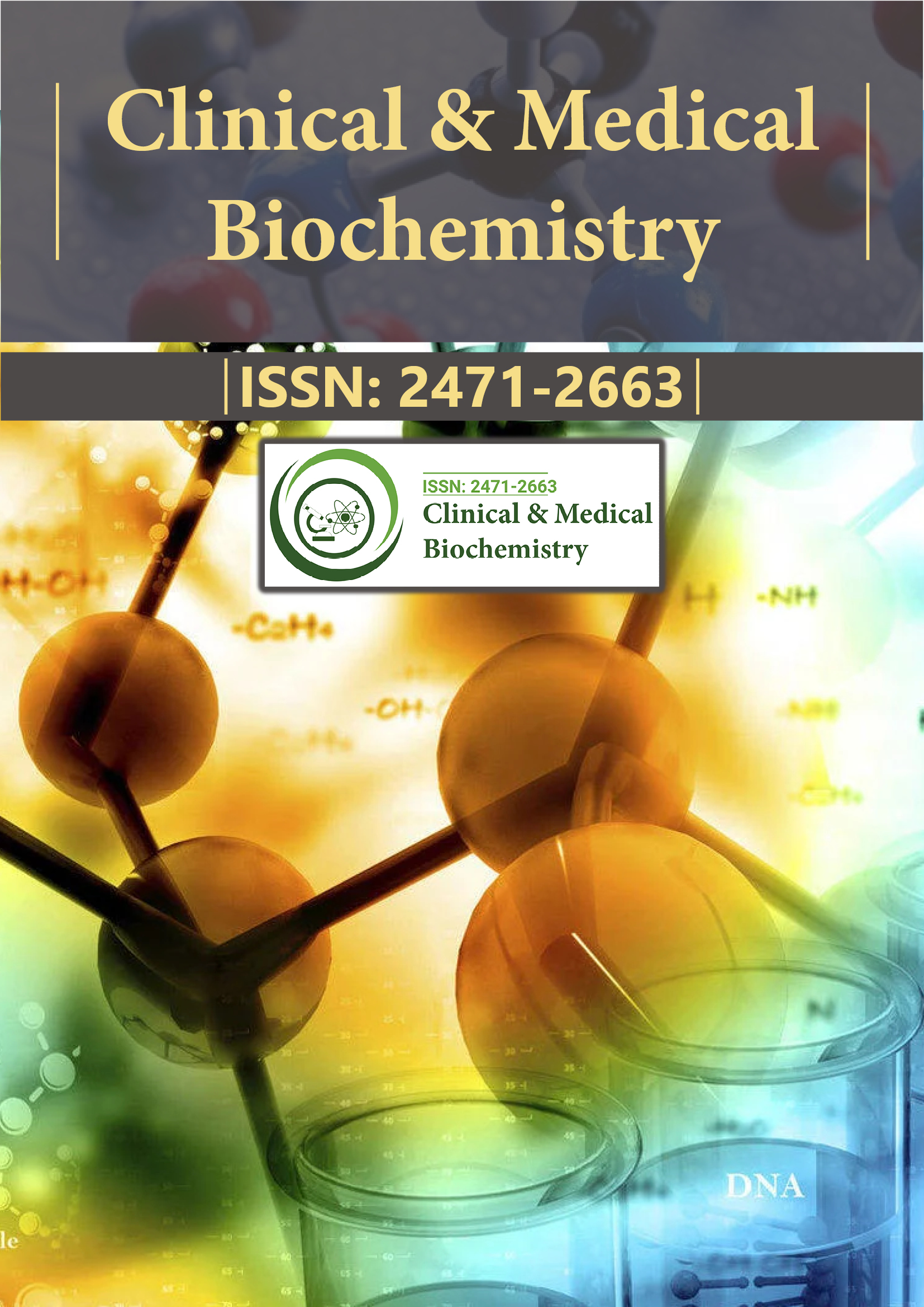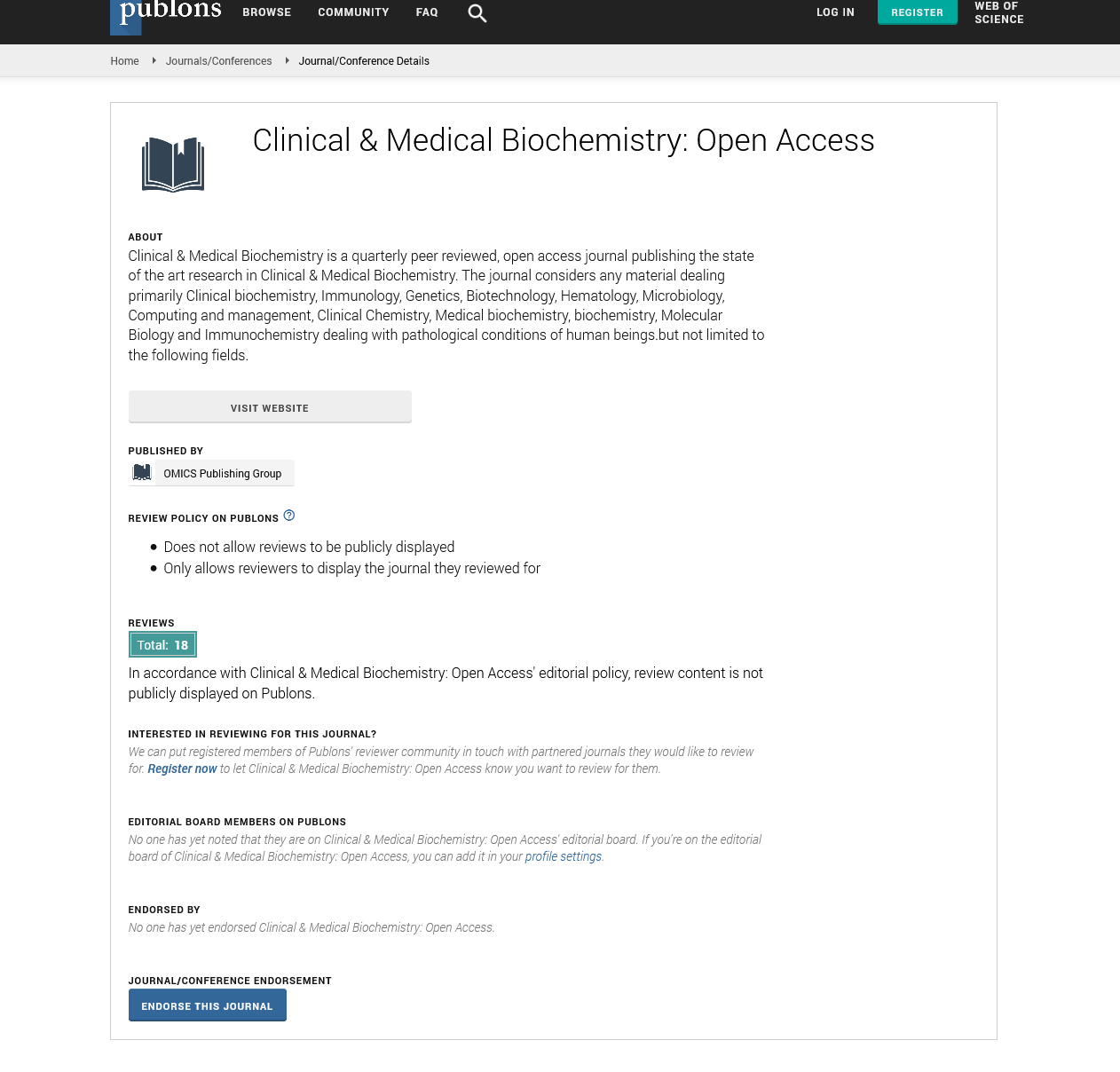Indexed In
- RefSeek
- Directory of Research Journal Indexing (DRJI)
- Hamdard University
- EBSCO A-Z
- OCLC- WorldCat
- Scholarsteer
- Publons
- Euro Pub
- Google Scholar
Useful Links
Share This Page
Journal Flyer

Open Access Journals
- Agri and Aquaculture
- Biochemistry
- Bioinformatics & Systems Biology
- Business & Management
- Chemistry
- Clinical Sciences
- Engineering
- Food & Nutrition
- General Science
- Genetics & Molecular Biology
- Immunology & Microbiology
- Medical Sciences
- Neuroscience & Psychology
- Nursing & Health Care
- Pharmaceutical Sciences
Commentary - (2025) Volume 11, Issue 2
Exploring Lipid Metabolism and Its Role in Energy Storage and Cellular Function
Ganka Kossekova*Received: 30-Apr-2025, Manuscript No. CMBO-25-29625; Editor assigned: 02-May-2025, Pre QC No. CMBO-25-29625; Reviewed: 16-May-2025, QC No. CMBO-25-29625; Revised: 23-May-2025, Manuscript No. CMBO-25-29625; Published: 30-May-2025, DOI: 10.35841/2471-2663.25.11.248
Description
Lipid metabolism refers to the complex biochemical processes involved in the synthesis, breakdown and regulation of lipids in the human body. Lipids, including fats, oils, phospholipids and sterols, play critical roles in energy storage, cell membrane structure, hormone production and signaling pathways. The metabolism of lipids is tightly regulated to ensure energy balance, maintain cell integrity and support numerous physiological functions. Dysregulation of lipid metabolism can contribute to a variety of metabolic disorders, including obesity, cardiovascular disease and type 2 diabetes.
The journey of lipid metabolism begins with dietary intake. Lipids consumed in food are primarily in the form of triglycerides, cholesterol and phospholipids. Digestion of these lipids begins in the stomach with the action of gastric lipase but is primarily carried out in the small intestine, where bile salts emulsify fat globules to increase their surface area. Pancreatic lipase then hydrolyzes triglycerides into free fatty acids and monoglycerides. These smaller molecules are absorbed by the intestinal mucosa, where they are reassembled into triglycerides and packaged into lipoproteins known as chylomicrons. Chylomicrons enter the lymphatic system and then the bloodstream, delivering lipids to various tissues in the body. Once inside the tissues, triglycerides can be stored or utilized for energy. Adipose tissue serves as the main storage site for triglycerides. When the body requires energy, especially during fasting or prolonged exercise, stored triglycerides are broken down through a process known as lipolysis. This process releases free fatty acids and glycerol into the bloodstream. Hormones such as epinephrine, norepinephrine and glucagon stimulate lipolysis, while insulin acts as an inhibitor. The free fatty acids travel to tissues such as muscle and liver, where they undergo further metabolic processing.
In cells, fatty acids are transported into the mitochondria via the carnitine shuttle system, particularly long-chain fatty acids that require active transport. Once inside the mitochondria, they undergo beta-oxidation, a cyclic process that breaks down fatty acids into two-carbon units in the form of acetyl-CoA. This acetyl-CoA then enters the citric acid cycle (Krebs cycle), where it is further oxidized to produce carbon dioxide, water and high-energy electron carriers.
When there is an excess of acetyl-CoA, particularly during prolonged fasting or in individuals with uncontrolled diabetes, the liver converts it into ketone bodies through a process called ketogenesis. Ketone bodies such as acetoacetate, beta-hydroxybutyrate and acetone can be used as alternative energy sources by many tissues, including the brain. This adaptation is critical during carbohydrate scarcity and supports energy needs when glucose availability is limited. However, excessive ketone body production can lead to a dangerous condition called ketoacidosis, which is most commonly observed in type 1 diabetes.
In addition to energy production, lipid metabolism is involved in the biosynthesis of important biological molecules. Cholesterol, a type of sterol, is synthesized in the liver and serves as a precursor for steroid hormones, vitamin D and bile acids. Phospholipids, another class of lipids, are essential components of cell membranes, providing structural integrity and fluidity. The proper synthesis and incorporation of these lipids are crucial for membrane function and cellular signaling.
The transport of lipids in the blood is mediated by lipoproteins, which are complexes of lipids and proteins. These include chylomicrons, Very-Low-Density Lipoproteins (VLDL), Low-Density Lipoproteins (LDL) and High-Density Lipoproteins (HDL). Each class of lipoprotein has distinct functions. For example, LDL is often referred to as "bad cholesterol" because it can deposit cholesterol in arterial walls, contributing to atherosclerosis. HDL, or "good cholesterol", helps remove excess cholesterol from tissues and transports it back to the liver for excretion. Maintaining a healthy balance between these lipoproteins is essential for cardiovascular health.
Disruptions in lipid metabolism are associated with several metabolic disorders. Hyperlipidemia, characterized by elevated levels of lipids in the blood, is a major risk factor for heart disease and stroke. Obesity results from chronic energy imbalance and excessive fat accumulation, often leading to insulin resistance and type 2 diabetes. Genetic disorders such as familial hypercholesterolemia impair lipid regulation and increase the risk of early-onset cardiovascular disease. Understanding the mechanisms of lipid metabolism has led to the development of various therapeutic strategies, including lifestyle changes, dietary interventions and pharmacological agents targeting lipid pathways.
Conclusion
In summary, lipid metabolism is an essential and highly regulated process that supports energy production, structural function and signaling in the body. From digestion and absorption to synthesis, storage and oxidation, lipids play a versatile and critical role in maintaining human health. Advances in our understanding of lipid metabolism continue to inform the prevention and treatment of a wide range of metabolic diseases, emphasizing its importance in both basic biology and clinical practice.
Citation: Kossekova G (2025). Exploring Lipid Metabolism and Its Role in Energy Storage and Cellular Function. Clin Med Bio Chem. 11:248.
Copyright: © 2025 Kossekova G. This is an open-access article distributed under the terms of the Creative Commons Attribution License, which permits unrestricted use, distribution and reproduction in any medium, provided the original author and source are credited.

